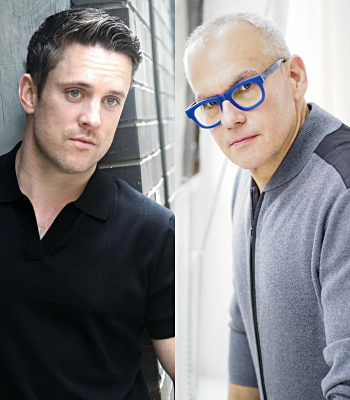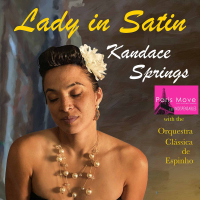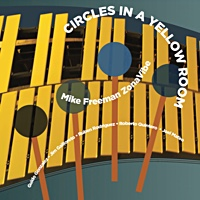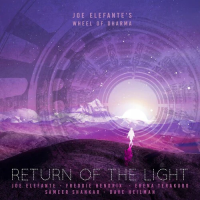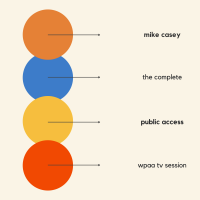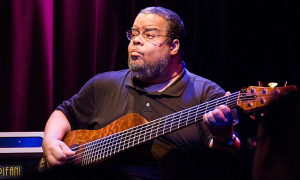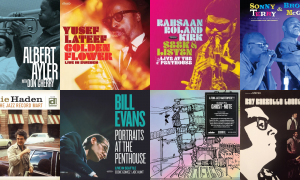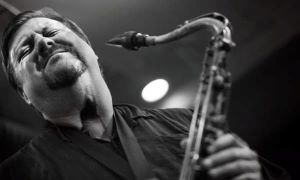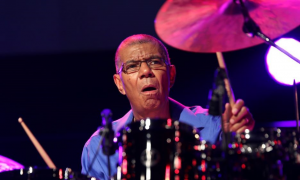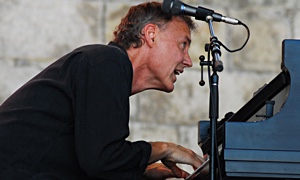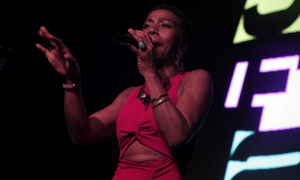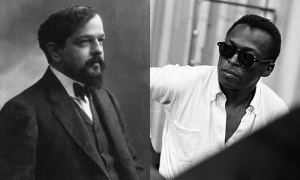Home » Jazz Articles » Year in Review » Best Quintets, Sextets and Big Bands
Best Quintets, Sextets and Big Bands
Can the best bands of all time in jazz actually be determined? When it comes to jazz, we always tend to think in terms of great artists, but every musician is invariably showcased in the context of a working band. "There is no such thing," bemoans Percy Heath. "Certain times have certain favorites, but no band of all time."
"I always leave someone out," demurred Phil Woods. "There's too many to choose from," complained Bill Holman. "I tend not to think in terms of 'favorite' or 'best' when it comes to art," reasoned Greg Osby. "Doing so turns things into a competition and I listen to artists for entirely specific reasons."
"Ask me tomorrow," joked Ken Borgers, "and I'll have different answers for you."
Nevertheless, any discussion about art by its very nature must have "a greatest." And a great band must have, not only, great musicians, but it should speak to all generations. It must not only represent the era in which it played, but it should transcend time in general. The following is the list of major nominations, and conclusion with the top three finalists for each category.
Index
Best Quintets
Best Sextets
Best Big Bands
THE BEST QUINTET
There wasn't much dissension. Seldom do bands stay together long enough to develop an exclusive sound. From the legendary Louis Armstrong's Hot Five to the modern Vandermark 5, most choices seemed already determined. Art Blakey and the Jazz Messengers (with Wayne Shorter and Lee Morgan) was influential. Nate Morgan reminisced, "I loved that band. That band was part of my childhood. It was easy to learn to play listening to that band." "Art Blakey established the tenor and trumpet sound," noted Terry Gibbs. Gibbs went on to praise Horace Silver (once a member of Blakey's band), "Horace gave us that funk sound." Chicago luminary Ken Vandermark credited Armstrong, "Louis Armstrong's Hot Five laid the groundwork for everything." Surprisingly neither Art Blakey's Messengers, Horace Silver's quintet, or Armstrong's Hot Five cracked the top three.
1. Miles Davis Quintet - 1965-1968
There is little argument that the Miles Davis Quintet featuring Wayne Shorter, Herbie Hancock, Ron Carter, and Tony Williams is one of the classic combos in jazz history. "They played so well individually and collectively," certified Lee Konitz. Howard Mandel agreed, "Everyone is so in time and inspired by each other as they charge forward." Michael Cuscuna concluded, "They all had their own unique perspective on how to compose and play, and when those unique components came together, they created an absolutely whole new sound. It is extraordinarily creative." The collective and individual impact of these musicians is impossible to determine. Can modern jazz even be imagined without the impact of these five giants?
 Recommended Listening:
Recommended Listening:
- E.S.P. (Columbia, 1965)
- Miles Smiles (Columbia, 1966)
- Nefertiti (Columbia, 1967)
2. Miles Davis Quintet - 1955-1957
With John Coltrane, Red Garland, Philly Joe Jones, and Paul Chambers, the '50s Miles Davis Quintet could achieve nothing less than jazz immortality. Workin', Steamin', Relaxin', and Cookin' are classics. "You've got to love that rhythm section," reasoned pianist Pete Jolly. "They changed music history," added bassist Chuck Berghofer. Scott Yanow explained, "There was that great contrast between Miles and Coltrane. Their originality was the definition of hard bop." Defining modern ballads ("My Funny Valentine") and turning trite show tunes into anthems ("If I Were a Bell"), this Miles Davis Quintet defined jazz for a generation.
 Recommended Listening:
Recommended Listening:
- Cookin' (Prestige, 1956)
- Relaxin' (Prestige, 1956)
- Steamin' (Prestige, 1956)
3. Charlie Parker Quintet with Dizzy Gillespie
Hank Jones witnessed firsthand, "They had great artistry. Great individuals. The unique individualness of Parker and Diz. They both had distinct styles and were both innovators. That was a band!" Pianist Barry Harris kept it simple, "I'm a bebopper. That was my band." Jimmy Heath elaborated, "They played the most difficult lines as one. They changed music." John McDonough sums up the thoughts of many when he stated, "That band remains the matrix and standard for some of the best jazz being played today."
 Recommended Listening:
Recommended Listening:
- Diz 'N Bird at Carnegie Hall (Blue Note, 1947)
- Bird and Diz (Verve, 1950)
- Jazz at Massey Hall (Debut, 1953)
3. Art Ensemble of Chicago
One of the most innovative groups of the '70s and '80s, the progressive Art Ensemble of Chicago was the vanguard for many of the contemporary pioneers today. "For their first 15 years this group attacked nearly improvising aesthetic with complete originality," assured Vandermark. Wadada Leo Smith professed, "I heard them live and watched them in action. They took theatrics to another level, spontaneous theater that had a theme and character to it." Oluyemi Thomas agreed, "The Art Ensemble has moved the music into an area that allows for space and silence. Their unique approach to collaboration is unparalleled in creative music. Thomas further elaborated, "They have a poetic sense and social consciousness. They have positively influenced my music and all of creative music."
 Recommended Listening:
Recommended Listening:
- 1967/68 (Nessa, 1967)
- Live in Paris (Charly, 1969)
- Bap-Tizum (Atlantic, 1972)
![]()
Numbers:
- Miles Davis - 48
- Miles Davis - 31
- Charlie Parker-Dizzy Gillespie - 28
- Art Ensemble of Chicago - 28
- Art Blakey and the Jazz Messengers with Wayne Shorter - 25
- Horace Silver with Junior Cook - 18
- Louis Armstrong's Hot Five - 12
- Thelonius Monk - 10
- Clifford Brown-Max Roach - 9
- Shelly Manne - 9
- Cecil Taylor Unit - 7
- Mahavishnu Orchestra - 5
- Dave Holland, Jackie McLean, Manfred Schoof, Horace Silver with Hank Mobley, Vandermark 5, Weather Report - 3
THE BEST SEXTET
Surprisingly, the least common thread amongst the sextet category was the addition of the trombone. Art Blakey & The Jazz Messengers featured Curtis Fuller on staples Free for All and Buhaina's Delight. But apart from Blakey, the other notables augmented their front line with the alto saxophone. John Kirby pioneered a unique lineup of trumpet, clarinet, piano, drums, and alto saxophone. "I loved that band," exclaimed Clark Terry. "They swung well and weren't too heavy." McDonough was in agreement, "Though not to everyone's taste, they shouldn't be overlooked." Nat Hentoff once wrote of Blakey's version of the Messengers with Fuller, Wayne Shorter, Freddie Hubbard, Cedar Walton, and Reggie Workman, "Spurred by Blakey's firebolts, the other musicians rose to a collective - as well as individual - intensity." But neither Kirby's individuality nor Blakey's cooperative aggregate topped the following three.
1. Miles Davis Sextet with John Coltrane and Cannonball Adderley
Holman simply and eloquently stated the logical conclusion, "Kind of Blue is the greatest recording, so they must be the greatest band." With only two studio recordings and one other poorly recorded "live," these six men simply turned music on its head by introducing the jazz world to modal music. And no one has done it better since. Kind of Blue is considered a masterpiece. Rolling Stone voted it one of the ten best albums of all time (in any genre). And to this day, Kind of Blue remains the best selling jazz album of all time even with figures so distorted and confusing, the exact total is unknown. Vandermark concluded, "I don't really think there's much that I can say here that hasn't already been said better by the music they played." Enough said.
 Recommended Listening:
Recommended Listening:
- Milestones (Columbia, 1958)
- '58 Sessions (Columbia, 1958)
- Kind of Blue (Columbia, 1959)
2. Charles Mingus Sextet with Eric Dolphy
Charles Mingus toured Europe in the spring of '64 with a sextet that included Johnny Coles on trumpet, Clifford Jordan on tenor, Jaki Byard on piano, Dannie Richmond on drums, and Eric Dolphy on alto and bass clarinet. Coles departed the tour early because of illness, but this tour was of particular note because Dolphy left the band at the tour's conclusion, remained in Europe, and died not long after. The band's '64 tour is one of the most documented in jazz history with numerous live recordings and countless unauthorized bootlegs. Vandermark acknowledged, "I think I own every live recording this band ever did. This combination of rhythm section flexibility and front line intensity has never been excelled."
 Recommended Listening:
Recommended Listening:
- Town Hall Concert (Jazz Workshop, 1964)
- The Great Concert of Charles Mingus (Prestige, 1964)
- Revenge! (Revenge, 1964)
3. Benny Goodman Sextet with Charlie Christian
The "King of Swing," while celebrated for his big band achievements also made an impression with his small combos. "They were the perfect combination," remembered Jones. "They moved me the most and are among the supreme in the history of jazz by virtue of Charlie Christian and, of course, Goodman at his peak. They generated an extraordinary body of enduring original material, played it beautifully, and made a place for the guitar as a front line voice. Beyond that, they produced great work within the context of popular music without dumbing down." When considering just how many guitarists sounded like Christian, Jones' insights have significant merit.
 Recommended Listening:
Recommended Listening:
- Benny Goodman Sextet (Vintage Jazz, 1939)
- Benny Goodman and the Sextet (Jazz Archives, 1939)
- Charlie Christian with the Benny Goodman Sextet and Orchestra (Columbia, 1940)
![]()
Numbers:
- Miles Davis with John Coltrane and Cannonball Adderley - 59
- Charles Mingus with Eric Dolphy - 30
- Benny Goodman with Charlie Christian - 25
- Art Blakey & The Jazz Messengers with Shorter/Hubbard/Fuller - 23
- John Kirby - 9
- Zoot Sims with Al Cohn - 6
THE BEST BIG BAND
The biggest surprise came from Hentoff and Frank Wess, who gave strong support for the all female '40s band International Sweethearts of Rhythm. "They swung like crazy, and had great musicians," recalled Wess. Women were also represented by the Maria Schneider Jazz Orchestra and the 15-piece DIVA featuring Ingrid Jensen and Claire Daly. Otherwise, opinions varied and suggestions were assorted. "Jimmie Lunceford, Earl Hines, Les Hite, Chick Webb - they were all good," marked Gerald Wilson. Supporting Woody Herman & The Second Herd, Frank Capp recounted, "Everything they did was just great. They had Stan Getz, Serge Chaloff, Shorty Rogers, everybody!" Stan Kenton had plenty of devotees as well. Ironically, genteel Jones was a big fan, "The band around World War II had a great sound." Gibbs admired Benny Goodman's band, "I patterned my band after Benny Goodman." Dizzy Gillespie's trail-blazing big band won many accolades. Bassist Al McKibbon recalled, "I was in that band. With that Latin rhythm, it was great." Alexander Von Schlippenbach's Globe Unity Orchestra received plenty of mention among modern improvisers as well. "The combination of this many great improvisers is pretty damn hard to ignore. I particularly like the group's early years, when they were still utilizing loose structures and compositions from members of the band," described Vandermark. But by most accounts, none were as influential as the three below.
1. Duke Ellington
"It was the ideal confluence of solo and structure," paraphrased McDonough. For many other voters, it was simple. Ellington had the world's best band. Dave Brubeck remembered, "I had all of those records as soon as they'd come out. I loved Ellington all of his career, but when I was a kid, buying those records, I couldn't believe how great they were." Wess agreed, "He was always original and could always fire you up." KJAZZ's James Janisse brought up an interesting point, "His '40s band was the best for the cats that came through his band and had careers in their own right. But, the writing and tenacity of this man during the racial strife and persecution was extraordinary. He continued to write songs that were so good that the white band leaders would pay him to keep his band afloat." "From my standpoint, nearly every decade of this band's existence was phenominal," reminded Vandermark.
From hits like "Take the 'A' Train" and "I Let a Song Go Out of My Heart" to ground breaking pieces liberating the bass from simple time keeping ("Ko-Ko") to breathtaking solo features ("Cotton Tail," "Concerto for Cootie") to the zenith of creativity, the opus "Black, Brown and Beige," which opened up a whole new world of jazz composition, Duke Ellington justly deserves the honor of the greatest jazz orchestra. Setting the standard and continually raising it, changing with the times as well as transcending them, he truly was beyond category.
 Recommended Listening:
Recommended Listening:
- The Blanton-Webster Band (Bluebird/RCA, 1939)
- The Complete RCA-Victor Mid-Forties Recordings (1944-1946) (RCA, 1944)
- Black, Brown and Beige (Columbia, 1958)
2. Count Basie
"Even though Duke Ellington was influential, more bands copied Basie's band. Woody Herman's band was an indirect take off of that band," illustrated Gibbs. While Count Basie was never known for his compositions, his big band ('36-'41) featured Harry "Sweets" Edison, Buck Clayton, Jo Jones, and Lester Young. McDonough noted, "There were totally unique, driven by a cult of original personalities that could neither be preserved nor replaced." Dave Brubeck remembered seeing Basie in the '30s when he was "striding like crazy." "I loved the stuff he did with Billie Holiday and Jimmy Rushing." Jones furthered the credit, "They were the best of that era." Then there was Basie's Atomic Band. "They influenced my life," explained Pat La Barbera. Seated behind the drums of his Basie-influenced Jaggernaut, Capp clarified, "People ask me why I still play his music. It's like asking why people still play Mozart. It's simply the best." "Nobody out swung Basie," agreed Cuscuna. "I hate to say it, but I like the Atomic Band better than the first band." Basie sax member Wess summarized his experience, "We were the most consistant band and the best band from the '50s on."
Terry, who had the unique opportunity of playing with both Ellington and Basie diplomatically pointed out, "Duke was more knowlart ensembleedgeable in theory and counterpoint. Basie swung more consistently. I've got to give them a tie."
 Recommended Listening:
Recommended Listening:
- The Best of Count Basie (Decca, 1937)
- The Complete Roulette Studio Count Basie (Mosaic, 1957)
- The Complete Atomic Basie (Roulette, 1957)
3. Sun Ra Arkestra
A mythical figure, Sun Ra's (AKA Herman Sonny Blount) legacy and influence has been discounted because of his outlandish claims of being from the planet Saturn. A true visionary and musical pioneer, Sun Ra has been lessened by his quirky personality and interplanetary philosophy, which most "scholarly" critics and cynical documentarians found to be insane, a "galatic gobbledegook." But his combination of collective, creative improvisation and African-American tradition, his uncanny ability to juxtapose swing, Ellingtonia, and free jazz is unparalleled and undisputed. "He made the most timeless and expansive music ever," credited radio host/bandleader Carlos Niño. "He connected with and pushed every generation that he made music in." Vandermark concurred, "Sun Ra was pretty much the only composer to take Ellington and Strayhorn's large ensemble innovations and bring them into the end of the 20th century, his own way." Controversial - maybe. Erratic - perhaps. Revolutionary - definitely.
 Recommended Listening:
Recommended Listening:
- Jazz in Silhouette (Saturn/Evidence, 1958)
- Heliocentric Worlds Vol. 1 (ESP, 1965)
- Atlantis (Saturn/Evidence, 1967)
![]()
Numbers:
- Duke Ellington - 53
- Count Basie - 40
- Sun Ra - 29
- Dizzy Gillespie - 14
- Stan Kenton, Jimmie Lunceford - 12
- Billy Eckstine, Earl Hines, Bill Holman, Chick Webb - 9
- Anthony Braxton, Peter Brötzmann Chicago Tentet, Gil Evans - 6
- Chris McGregor's Brotherhood of Breath, DIVA, Fletcher Henderson, International Sweethearts of Rhythm, Nexus, William Parker & The Little Huey Creative Music Orchestra, Gerald Wilson - 3
This raised a important question: is music transcendent over time, or is music simply to speak to one generation? McDonough gave an important perspective when he stated, "I think that there is a window of opportunity in which every generation absorbs most of its most important music and cultural cues - starting around 11 or 12 and ending around 22 or 23. Within that period, one is a member of America's one true leisure class - being a student.
There is time for music and the kind of shared listening experiences in which beliefs and associations about music become self-reinforcing and ultimately imprinted. Most people unquestioningly embrace whatever the music of the time might be; a few go off and find something on their own. But they do it within that window. Then after one's early 20s, other demands crowd into the time once spent absorbing music. So the intake mechanisms of youth shut down in favor of career, marriage, parenting, and so on - all more pressing and time consuming. The die of taste is cast forever. This is why everyone remains emotionally attached to the music of adolescence, convinced that he lived in some "golden age" and forever wonders why the new music of the moment is never as good as it used to be. They may be demonstrably right in some cases. But that's a different argument of musicology." Mandel concurred, "Jazz fans create their own histories by what they listen to first. That is why listeners must go backwards and forwards." Impressive were musicians and writers that preferred music apart from their generation of influence. Lee Konitz, for example, lauded Brad Mehldau's and Keith Jarrett's respective trios. Swing era historian McDonough gave Coleman high ratings. And Evan Parker acknowledged the impact of Ken Vandermark. As the mission of all about jazz, the goal of the discourse is to open the readers' ears to new sounds and styles.
Post your favorite Quintets, Sextets and Big Bands on the AAJ Bulletin Board .
Participants: Josh Abrams, Karrin Allyson, Chuck Berghofer, Ollie Bivins, Arthur Blythe, Ken Borgers, Rob Brown, Dave Brubeck, Greg Burk, Frank Capp, Marilyn Crispell, Jay Collins, Michael Cuscuna, Laurence Donohue-Greene, Paula Edelstein, Peter Erskine, Bob Florence, Terry Gibbs, Barry Harris, Percy Heath, Jimmy Heath, Andrey Henkins, Nat Hentoff, Bill Holman, Steve Houghton, James Janisse, Pete Jolly, Hank Jones, Anson King, Lee Konitz, Larry Koonse, Joe La Barbera, Pat La Barbera, Alan Lawrence, Bruce Lundvall, Howard Mandel, Joe Maneri, Nick Martinis, John McDonough, Al McKibbon, John Medeski, Grachan Moncur III, Henry Mora, Nate Morgan, Carlos Niño, Greg Osby, Evan Parker, Dave Pell, Ken Poston, Ruth Price, John Pizzarelli, Phil Ranelin, Sam Rivers, Scott Rosenberg, Carl Saunders, Bobby Shew, Wadada Leo Smith, Derek Taylor, Clark Terry, Oluyemi Thomas, McCoy Tyner, Vince Trombetta, Phil Urso, Ken Vandermark, Ken Waxman, Frank Wess, Gerald Wilson, Phil Woods, Scott Yanow.
Tags
PREVIOUS / NEXT
Support All About Jazz
 All About Jazz has been a pillar of jazz since 1995, championing it as an art form and, more importantly, supporting the musicians who make it. Our enduring commitment has made "AAJ" one of the most culturally important websites of its kind, read by hundreds of thousands of fans, musicians and industry figures every month.
All About Jazz has been a pillar of jazz since 1995, championing it as an art form and, more importantly, supporting the musicians who make it. Our enduring commitment has made "AAJ" one of the most culturally important websites of its kind, read by hundreds of thousands of fans, musicians and industry figures every month.



